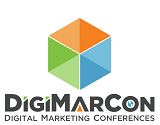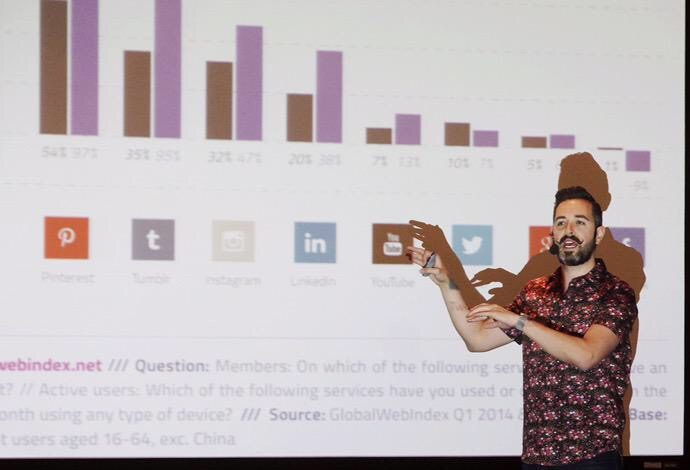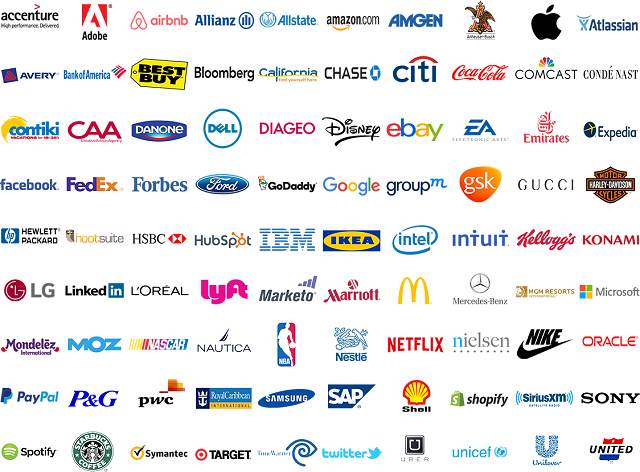Posts Tagged "Targeted Email Campaigns"
Articles
- Best Marketing Conference Sponsorship
- What Does it Mean to Be an Exhibitor at a Conference?
- What Is the Biggest Social Media Conference?
- What Is an Innovation Conference?
- What Is a Typical B2B Event?
- What Are the Cloud Technology Events in 2025?
- Marketing Event Volunteer Opportunities: A Comprehensive Guide
- Digital Marketing Event Volunteer Opportunities Near Me
- What Does a Volunteer Do at a Conference?
- Is DigiMarCon Worth It?
- Is DigiMarCon Good?
- What is the Biggest Marketing Forum?
- What are Digital Marketing Conferences?
- Marketing Conference Exhibiting: Your Guide to Success
- Digital Summit Comparison: A Closer Look at DigiMarCon
- Digital Marketing Conference
- Digital Marketing Events: Your Guide to Success in 2025
- Marketing Conferences: Unlocking Your Business Potential in 2025
- What Is The Future of Digital Marketing in 2030?
- B2B Event Marketing Strategy: Unlocking Success For Your Business
- Why B2B Event Marketing?
- What Should a B2B Marketing Strategy Include?
- Top Marketing Conferences for 2025
- What Is the Future of Marketing in 2025?
Digital Marketing Conferences
- NORTH AMERICA
- DigiMarCon Cruise
(New Orleans, LA, USA) - DigiMarCon West
(Los Angeles, CA, USA) - DigiMarCon Northwest
(Seattle, WA, USA) - DigiMarCon Canada West
(Vancouver, BC, USA) - DigiMarCon Canada
(Toronto, ON, Canada) - DigiMarCon Canada East
(Montreal, QC, Canada) - DigiMarCon Florida
(Orlando, FL, USA) - DigiMarCon Gulf Coast
(Houston, TX, USA) - DigiMarCon Southern California
(San Diego, CA, USA) - DigiMarCon Midwest
(Chicago, IL, USA) - DigiMarCon Mid-South
(Nashville, TN, USA) - DigiMarCon Great Lakes
(Detroit, MI, USA) - DigiMarCon North
(Minneapolis, MN, USA) - DigiMarCon Central
(Kansas City, MO, USA) - DigiMarCon Texas
(Dallas, TX, USA) - DigiMarCon New England
(Boston, MA, USA) - DigiMarCon Mid-Atlantic
(Philadelphia, PA, USA) - DigiMarCon South Florida
(Miami, FL, USA) - DigiMarCon Southeast
(Atlanta, GA, USA) - DigiMarCon Central Florida
(Tampa, FL, USA) - DigiMarCon East
(New York, NY, USA) - DigiMarCon South Atlantic
(Charlotte, NC, USA) - DigiMarCon America
(Washington, D.C. USA) - DigiMarCon Northern California
(San Francisco, CA, USA) - DigiMarCon Rocky Mountains
(Denver, CO, USA) - DigiMarCon South
(San Antonio, TX, USA) - DigiMarCon Silicon Valley
(San Jose, CA, USA) - DigiMarCon Orange County
(Anaheim, CA, USA) - DigiMarCon Southwest
(Phoenix, AZ, USA) - DigiMarCon World
(Las Vegas, NV, USA)
- DigiMarCon Cruise
- LATIN AMERICA
- EUROPE
- MIDDLE EAST
- AFRICA
- ASIA PACIFIC
- DigiMarCon Hawaii & Pacific
(Honolulu, HI, USA) - DigiMarCon Asia & Japan
(Tokyo, Japan) - DigiMarCon New Zealand
(Auckland, New Zealand) - DigiMarCon Australia
(Sydney, Australia) - DigiMarCon Oceania
(Melbourne, Australia) - DigiMarCon Southeast Asia
(Singapore) - DigiMarCon India
(New Delhi, India) - DigiMarCon North Asia & China
(Shanghai, China)
- DigiMarCon Hawaii & Pacific
- VIRTUAL
Digital Marketing Blog
- What Makes DigiMarCon Stand Out (And Is It Worth It?) October 30, 2025
- Is DigiMarCon Worth Attending? A Complete Breakdown October 29, 2025
- DigiMarCon for Startups: Why Founders Shouldn’t Miss It October 29, 2025
- DigiMarCon Recap: What Went Down and What’s Next October 29, 2025

































Effective Email Marketing: Boost Your Business Today
In today’s digital world, email campaigns are key for businesses to connect with their audience. They can boost engagement, conversions, and revenue. A smart email marketing plan can really make a difference.
Using personalized and targeted emails, businesses can strengthen their ties with customers. This builds loyalty and helps them grow. As digital marketing changes, it’s vital for businesses to keep up and use email marketing to their advantage.
Key Takeaways
The Power of Email Marketing in Today’s Digital Landscape
Email marketing is still a powerful tool, even with new marketing channels around. It’s effective because it can directly reach and engage people.
Why Email Marketing Still Outperforms Other Digital Channels
Email marketing beats many digital channels because of its high ROI and targeted reach. Unlike social media, emails are more likely to be seen because they go straight to the inbox. Plus, email marketing lets businesses personalize messages for each person.
This personal touch makes customers happier and more loyal. It also helps businesses get more repeat customers. Plus, you can track and analyze email campaigns to learn more about your customers and how well your messages are doing.
Key Statistics That Prove Email Marketing’s ROI
Many studies show email marketing’s strong results. For example, it can have an average ROI of 3800%, beating other digital marketing. Also, emails that are personalized can lead to 6x higher transaction rates.
These numbers show how email marketing can help businesses grow and make more money. By using email marketing well, companies can get big returns on their investment. It’s a key part of a good marketing plan.
Building a Quality Email List: Foundation for Success
Starting a strong email list is key to making the most of email marketing. A good email list lets businesses talk directly to their audience. This builds engagement and boosts sales. It takes careful steps, from building the list to keeping it fresh.
Ethical List Building Strategies That Work
Ethical list building means getting subscribers who really want your stuff. It’s about being clear about how they sign up and giving them something valuable.
Opt-in Forms That Convert
Opt-in forms are essential for getting email addresses. Put these forms where people can easily see them, like in sidebars or after blog posts. Make sure they work well on phones and tell people why they should sign up.
Social Media Integration for List Growth
Using social media can help grow your email list. Share your lead magnets on social media to draw in new subscribers. You can also share bits of your email content to get people to join your list.
Lead Magnets That Convert Visitors to Subscribers
Lead magnets are something special you offer to get email addresses. Good lead magnets include eBooks, whitepapers, and special deals. The goal is to give something valuable that your audience will love, making them more likely to sign up.
List Hygiene: Maintaining a Healthy Subscriber Base
Keeping your email list clean is important. It means getting rid of old or bad addresses. This helps your emails get delivered better and shows real results. Segmenting your list and reaching out to inactive subscribers can also keep your list healthy.
Email Marketing Strategy Development
Creating a good email marketing strategy means knowing your audience well and having clear goals. This is key to making campaigns that connect with your subscribers and get results.
Setting Clear Goals for Your Email Campaigns
To make a strong email marketing plan, you need to set clear goals. These goals might be to get more website visitors, sell more, or engage customers better. With specific goals, you can make your emails better and see if they work.
Understanding Your Audience’s Needs and Pain Points
Knowing your audience is essential for making emails they’ll care about. You need to look at what they like, what they do, and what they need. This way, you can send emails that solve their problems and connect with them better.
Creating a Content Calendar for Consistent Engagement
A content calendar is a must for keeping your email marketing on track. It lets you plan and schedule your emails ahead of time. This way, your subscribers get updates regularly without feeling bombarded. It also helps you mix up your content and match it with your marketing plans.
Balancing Promotional and Value-Based Content
It’s important to mix promotional emails with content that adds value. Promotional emails can sell, but content that helps and educates builds trust. This makes your brand a leader in your field.
Seasonal Planning for Maximum Impact
Using seasonal themes and timely offers in your emails can really boost their impact. Planning your emails around holidays or trends makes them more relevant and effective.
Crafting Compelling Email Content That Converts
Successful email marketing starts with content that speaks to your audience and gets them to act. It’s both an art and a science. You need to know what your audience likes, needs, and does.
Subject Line Formulas That Boost Open Rates
Your subject line is your email’s first impression. To get more opens, use proven subject line formulas like:
For example, “Your Exclusive Access to Our Latest Collection” can really help your open rates.
Email Body Content Best Practices
After grabbing attention with your subject line, your email body must deliver. Here are some tips:
Storytelling Techniques for Engagement
Storytelling is a great way to engage your audience. Tell stories that touch their hearts and make your content memorable.
Visual Content Integration
Visuals can really boost engagement. Use high-quality images, videos, or infographics to make your text more interesting.
Effective Calls-to-Action That Drive Results
A clear and strong call-to-action (CTA) is key to getting results. Your CTA should be:
For example, “Discover How to Boost Your Sales” is a great CTA.
Email Segmentation: Delivering Relevant Content to the Right Audience
Effective email marketing means sending the right message to the right people. This is done through email segmentation. By grouping your email list, you make your content more relevant. This leads to better engagement and more conversions.
Demographic Segmentation Techniques
Demographic segmentation sorts your audience by age, gender, job, or location. This lets you customize your content for different groups. For example, a fashion store might send special offers to younger or older customers based on their buying habits.
Behavioral Segmentation Strategies
Behavioral segmentation looks at how your subscribers act, like their email interactions or website visits. This helps you create campaigns that match their current interests and needs.
Key behavioral segmentation strategies include:
Purchase History Segmentation for Increased Sales
Segmenting by purchase history boosts sales and loyalty. By looking at past buys, you can spot trends and preferences. This helps in making appealing offers.
RFM Analysis Implementation
RFM (Recency, Frequency, Monetary) analysis sorts customers by their buying habits. It finds valuable customers and focuses marketing on keeping and engaging them.
Cross-Selling Opportunities Through Segmentation
By studying purchase history and behavior, businesses find chances to sell more. They offer related products or services to customers. This increases the average order value and makes customers happier.
Email Personalization Beyond First Name
Personalizing emails is more than just using a customer’s first name. Today, it’s about tailoring content, offers, and experiences to fit individual preferences and needs. This approach boosts engagement, conversion rates, and loyalty.
To get this level of personalization, marketers use several strategies:
Dynamic Content Implementation
Dynamic content shows different things to different people based on their data. This can include:
By using dynamic content, marketers can make their messages more relevant and engaging.
Behavioral Triggers for Automated Personalization
Behavioral triggers send automated messages based on customer actions. Examples are:
These triggers help send timely, relevant messages that connect with the audience.
AI-Powered Personalization Tools and Techniques
AI tools analyze customer data to predict what they might like. These tools help marketers:
Using AI for personalization brings a new level of sophistication to email campaigns.
Email Marketing Automation: Streamlining Your Marketing Efforts
Email marketing automation helps companies work more efficiently. It makes marketing more personal and effective. This way, businesses can send the right message to the right people at the right time.
Welcome Sequence Optimization
A good welcome sequence is key to a strong start with new subscribers. It sets the brand’s tone and can boost engagement.
First Impression Strategies
The first email should make a strong impression. It should be visually appealing and have a message that speaks to the subscriber’s interests.
Setting Expectations and Delivering Value
Later emails should clearly state what content subscribers will get and how often. Offering valuable content, special deals, or tips can build a positive relationship and increase engagement.
Abandoned Cart Recovery Campaigns
Automation is great for recovering lost sales. By sending reminders to customers who left items in their cart, businesses can get them to buy.
Post-Purchase Sequences That Build Loyalty
After a sale, emails can help keep the customer engaged. Sending emails with relevant content, asking for feedback, or offering special deals can build loyalty and encourage more purchases.
Measuring Email Marketing Success: Key Metrics to Track
Tracking the right metrics is key to improving your email marketing. You need to look at the data that really matters. This helps you see how your campaigns are doing.
Understanding Open Rates, Click-Through Rates, and Conversion Metrics
Open rates, click-through rates (CTRs), and conversion rates are important. They show how your audience interacts with your emails. Open rates tell you if your subject lines grab attention. Click-through rates show who’s interested in what you have to say. Conversion rates tell you who’s taking action, like buying something.
Deliverability Metrics and Their Impact
Deliverability metrics are vital for knowing if your emails reach your subscribers. Bounce rates show emails that can’t be delivered. Spam complaint rates show when people mark your emails as spam. Keeping an eye on these helps keep your email list healthy.
ROI Calculation for Email Campaigns
Understanding the ROI of your email campaigns is crucial. It shows how much money you make from them. To calculate ROI, compare the revenue from your campaigns to their costs. The formula is: (Gain from Investment – Cost of Investment) / Cost of Investment * 100. This shows how well your email marketing is doing financially.
Attribution Models for Email Marketing
Attribution models help figure out how much credit to give your email marketing for sales. Models like last-click attribution or multi-touch attribution help you see the whole customer journey. They show the value of each touchpoint, including emails.
Benchmarking Against Industry Standards
Comparing your email marketing metrics to industry standards gives you context. By looking at your open rates, CTRs, and conversion rates against averages, you can spot areas to improve. This helps set realistic goals for your campaigns.
Email Deliverability: Ensuring Your Messages Reach the Inbox
Email deliverability is key to getting your marketing emails to the right people. Spam filters and email service providers’ algorithms make it tough. It’s important to make sure your emails go to the inbox, not the spam folder.
To overcome this, understanding the technical side is crucial. A solid technical setup is the base for good email deliverability.
Technical Setup: SPF, DKIM, and DMARC Explained
SPF (Sender Policy Framework), DKIM (DomainKeys Identified Mail), and DMARC (Domain-based Message Authentication, Reporting, and Conformance) are key for email authentication. SPF stops spammers by listing allowed IP addresses for your domain. DKIM adds a digital signature to check if emails are genuine. DMARC reports and enforces these efforts, guiding what to do with unverified emails.
Avoiding Spam Triggers in Your Content
Your email content also affects deliverability. Spam filters can be triggered by certain words and formatting. To avoid this, create engaging, relevant content that speaks to your audience. Steer clear of too much punctuation, overly promotional language, and misleading subject lines.
Sender Reputation Management
Your sender reputation is vital for email deliverability. ISPs and email providers watch how you send emails. A good reputation comes from sending relevant content, handling complaints well, and avoiding bounces.
IP Warming Strategies
For new IP addresses or domains, IP warming is essential. It means slowly increasing email volume to build a good reputation with ISPs.
Email Authentication Best Practices
Following email authentication best practices is important. This includes updating SPF records, ensuring DKIM signatures are correct, and checking DMARC reports. These steps help keep your email system strong.
By focusing on these areas, you can greatly improve your email deliverability. This ensures your messages get to your audience’s inbox.
Conclusion: Taking Your Email Marketing to the Next Level
Effective email marketing is a key tool for businesses to grow online. By using best email practices and a solid email marketing strategy, companies can boost customer engagement and sales.
We’ve looked at many email marketing topics, like building a good email list and making engaging content. Understanding your audience and tailoring your messages can lead to better results.
Keep improving your email marketing by tracking important metrics. Look at open rates and conversion rates to make your strategy better. This way, you’ll get more out of your efforts and stay competitive online.
It’s time to elevate your email marketing. Use the tips and strategies shared to create a strong email marketing plan. This will connect with your audience and help your business grow.
FAQ
What is the best way to build an email list?
To build an email list, use opt-in forms on your website and social media. Offer lead magnets that give value to encourage sign-ups.
How often should I send emails to my subscribers?
Email frequency depends on your audience and content type. Aim for a balance to stay relevant without overwhelming. Use a content calendar to plan your emails.
What makes a subject line effective?
A good subject line is personalized, relevant, and grabs attention. Use formulas that include personal touches, urgency, or curiosity to boost opens.
How can I improve email deliverability?
Improve deliverability by avoiding spam triggers and using SPF, DKIM, and DMARC. Keep your list updated and engaged to maintain a good sender reputation.
What is email segmentation, and why is it important?
Email segmentation divides your list into targeted groups. It helps deliver relevant content, boosting engagement and conversion rates.
How do I measure the success of my email marketing campaigns?
Track key metrics like open rates, click-through rates, and conversion rates. Use attribution models to see email’s impact on your goals. Compare to industry standards to gauge performance.
What is email personalization, and how can it be achieved?
Email personalization tailors content to individual subscribers. Use dynamic content, behavioral triggers, and AI tools to create a personalized experience.
How can email marketing automation benefit my business?
Email marketing automation streamlines your efforts, saving time and improving results. Use it for welcome sequences, cart recovery, and post-purchase sequences to build loyalty and drive sales.